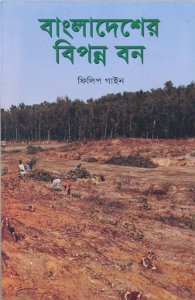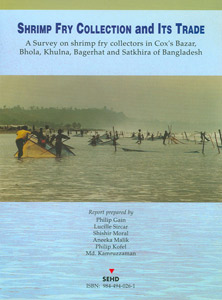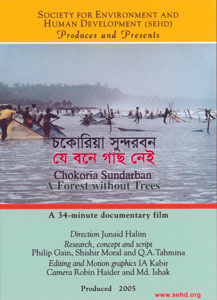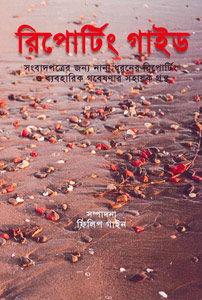
Bangladesher Biponno Bon
Factors that have lead to the deforestation of huge parts of Bangladesh forests, the role of various actors and the impact on forest people.
2005, Bangla, 276 pages, Paperback | Tk. 250 / US$15
Bangladesh is amazingly green with great biodiversity. But at the same time it is a forest-poor country that has lost its forest cover from about 20% in 1927 to a mere six per cent today. Outside the Sundarbans, only tiny patches of forests survive today.
The hills of the Chittagong Hill Tracts are bare today. The gorgeous garjan forest with myriad local species that one could see while traveling along the Chittagong-Cox’s Bazar-Teknaf highway, even a decade and half ago, are all gone. Plantations of exotic tree species (primarily acacia and eucalyptus) have taken the place of natural forest in many places. In the North-central and Northern regions, the sal patches have been replaced by “simple plantation” of exotic species. The remnants of the sal forests have become fragmented and only tiny patches survive today. The condition of the forests in the Northeastern region is no different. With the vanishing forests, the unique wildlife, forest-dwelling communities and their knowledge, traditions, and lot more have also become endangered or gone extinct.
What factors have led to this perilous condition? The typical response that come from the Bangladesh Forest Department, international financial institutions IFIs), donors and different other interest groups is that growing population, poverty, migration of landless people into the forest areas, shifting cultivation, illegal felling, fuelwood collection, etc. cause the degradation of the forests. But we normally do not look into other deep-rooted causes other than these official contentions.
The underlying factors for the destruction of the forests are an area where Philip Gain has investigated for the last one and a half decades. “Bangladesher Biponno Bon” is the outcome of his investigation. It’s an updated Bangla edition of his book, “The Last Forests of Bangladesh”.
Publication Details
Published: 2005
Language: English
Paperback: 276 pages
Author: Philip Gain
Price: Tk.250 / US$15




